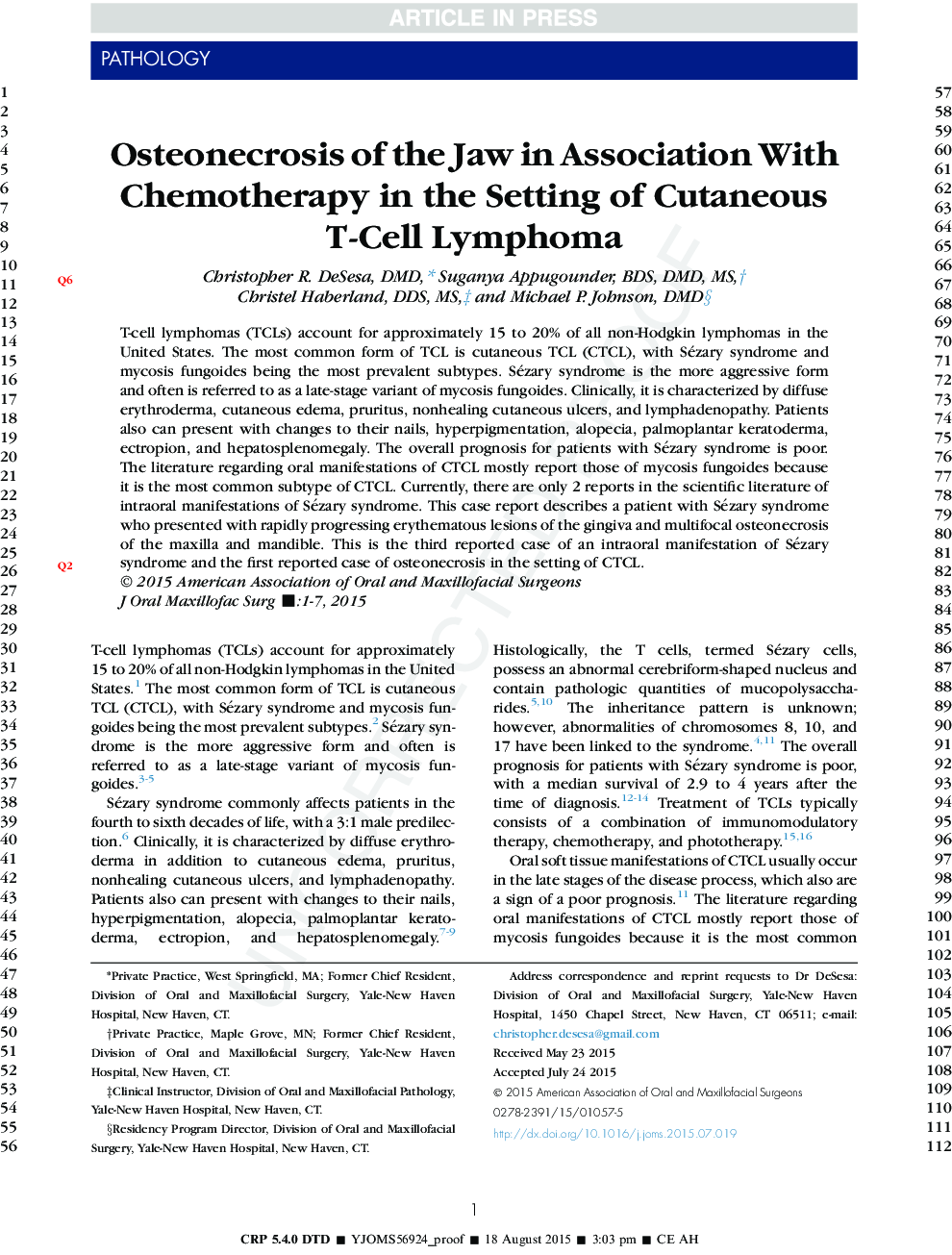| Article ID | Journal | Published Year | Pages | File Type |
|---|---|---|---|---|
| 6054343 | Journal of Oral and Maxillofacial Surgery | 2016 | 7 Pages |
Abstract
T-cell lymphomas (TCLs) account for approximately 15 to 20% of all non-Hodgkin lymphomas in the United States. The most common form of TCL is cutaneous TCL (CTCL), with Sézary syndrome and mycosis fungoides being the most prevalent subtypes. Sézary syndrome is the more aggressive form and often is referred to as a late-stage variant of mycosis fungoides. Clinically, it is characterized by diffuse erythroderma, cutaneous edema, pruritus, nonhealing cutaneous ulcers, and lymphadenopathy. Patients also can present with changes to their nails, hyperpigmentation, alopecia, palmoplantar keratoderma, ectropion, and hepatosplenomegaly. The overall prognosis for patients with Sézary syndrome is poor. The literature regarding oral manifestations of CTCL mostly report those of mycosis fungoides because it is the most common subtype of CTCL. Currently, there are only 2 reports in the scientific literature of intraoral manifestations of Sézary syndrome. This case report describes a patient with Sézary syndrome who presented with rapidly progressing erythematous lesions of the gingiva and multifocal osteonecrosis of the maxilla and mandible. This is the third reported case of an intraoral manifestation of Sézary syndrome and the first reported case of osteonecrosis in the setting of CTCL.
Related Topics
Health Sciences
Medicine and Dentistry
Dentistry, Oral Surgery and Medicine
Authors
Christopher R. DMD, Suganya BDS, DMD, MS, Christel DDS, MS, Michael P. DMD,
